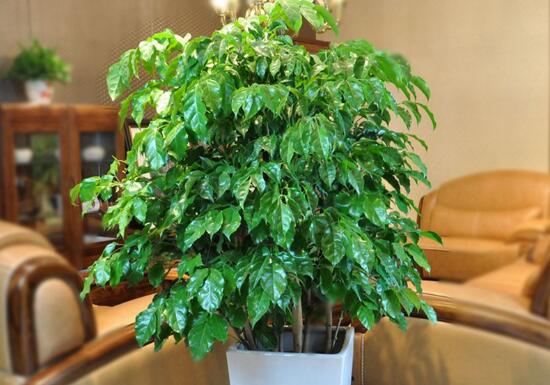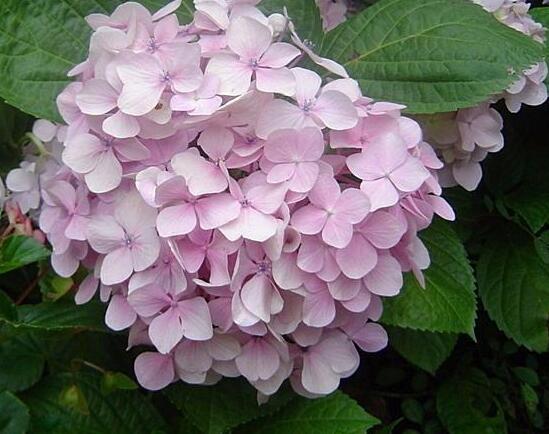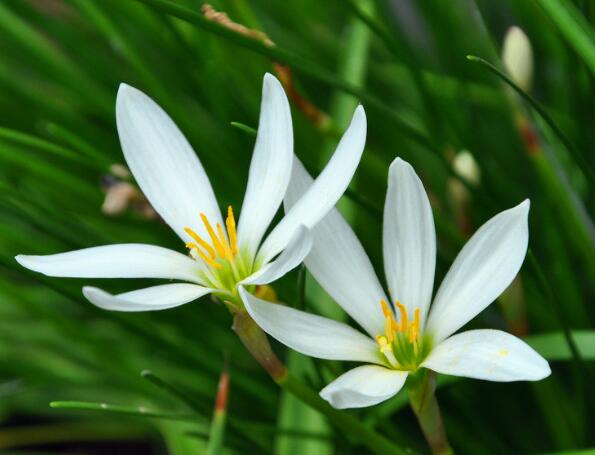How to water the happiness tree, how to water the happiness tree / twice a day in summer and once in winter
The beauty of the happiness tree is self-evident, its plant type, leaves, and even flower shape are unique, so it has been potted at home by many people. However, if you want the happiness tree to blossom, reasonable watering is the key, so how to water the happiness tree? How often is the happiness tree watered? The following are the watering methods and precautions of the happiness tree, follow the editor to have a look.
How to water the happiness tree, the method is very important

In life, not watering can be said to be one of the important reasons why many orchids can not keep happiness trees well, and too much watering will cause symptoms such as yellowing of happiness tree leaves and blackening of happiness tree leaves. Therefore, how to water the happiness tree and how to master the watering method is very important.
Second, the watering method of happiness tree
(1) how the happiness tree should be watered
In understanding the watering method of the happiness tree, the editor first introduces you how to judge that the happiness tree should be watered. Different environments, watering times, dosage are different. This needs to be judged by ourselves. Here are three ways to determine whether the happiness tree should be watered or not. The specific actions are as follows:
1. Knock on the basin: whether the happiness tree should be watered, the easiest way is to knock on the basin. Specific method: tap the flowerpot with your fingers in 3 places, the sound is clear that there is enough water in the flower soil, and the sound is dull, which means that the basin is dry and needs watering at this time.
Weight: if you are sensitive to weight, you can hold up the flowerpot and feel important before watering the happiness tree. If it feels light, it should be watered at this time. Of course, this weighing also needs a process, otherwise it is easy to make mistakes.
3, soil exploration: how to judge whether the happiness tree should be watered, in addition to the above two methods, the simplest and most direct is to explore the soil. Specific method: flower friends can insert their fingers into the pot soil in 3 places to feel it. If it's wet, don't water it. If it's dry, you can't even put your fingers into it. It's time to water it.
(2) watering method of happiness tree
The happiness tree likes a humid environment, and its growth needs plenty of water, so watering is a very important thing. The amount of water needed for happiness trees is also different in different seasons, so we should pay attention to watering. As for how often the happiness tree is watered, it is mainly divided into summer and winter, as follows:
1. Water twice a day in summer
The happiness tree itself likes to be moist, and it is hot in summer, so it needs to be watered enough and watered frequently. Generally speaking, it should be watered at least twice a day in summer, at noon and in the evening, so as to meet its requirements and make it grow healthily, but do not accumulate water in the soil.
2. Water once a day in winter
How often is the happiness tree watered? Although winter also needs watering maintenance, but because of the low temperature, the happiness tree will dormant because of the low temperature. So don't water too much in the dormant period, just water once after noon, and spray the plant with warm water to avoid dehydration and dryness and hinder the growth.
How to water the happiness tree
Watering method of Happiness Tree
Happiness tree is a kind of tree species that likes wet environment, and its growth needs plenty of water, so watering is a very important thing.
Happiness trees need different amounts of water in different seasons, so we should pay attention to watering.
First of all, when it is hot in summer, we should pay attention to the supply of water, water a lot to ensure that the soil is not dry and moist, and often spray water on the tree in hot weather, at least three times a day, to ensure the water requirements of the happiness tree. promote the happiness tree to grow, but do not accumulate water in the soil.
The happiness tree is watered and maintained in winter, and the happiness tree is also maintained indoors because of the low temperature in winter, and the happiness tree is dormant because of low temperature in winter, so don't water too much water during the dormancy period, just water it once after noon, and spray the plant with warm water to prevent the plant from losing water and drying and hindering its growth.
Points for attention in watering Happiness Tree
Happiness trees need to be watered frequently, but watering should also pay attention to the problems:
First of all, pay attention to the watering times. Although it is dry and hot in summer, the happiness tree should be watered frequently, but it should also be watered twice a day in summer, the first time after noon, and once again in the evening, but three times of water spraying should be carried out during this period to keep the plant moist. Therefore, the number of times a day should not be too much, and watering should not be too frequent, otherwise it will cause rotten roots and cause plant death.
Secondly, the time of watering in winter is 2 to 3 days, pay attention to each watering, only half a pot can, but also pay attention to warm water watering and spraying.
In short, it is necessary to ensure a moist growth environment and pay attention to waterlogging prevention.
How to prune Happiness Tree Culture methods and matters needing attention of Happiness Tree
Happiness tree is an ornamental plant, and its leaf color, luster and tree shape determine its ornamental value. So do you know how to prune the happiness tree? Today, let's talk about the cultivation methods and matters needing attention of Happiness Tree.
First, the introduction of the happiness tree
Happiness is what we pursue, sometimes it is very abstract, sometimes it is very concrete, it is simple, but it is also very complex. And this plant called Happiness Tree is concrete and pure. Why is it called Happiness Tree?
1. It is a tropical plant. Happiness tree is also known as bean tree, pepper tree, mountain bean tree. It is a very precious indoor ornamental plant with beautiful shape, whirling shadows and small and green leaves. Happiness tree belongs to the Arbor of the family Liriodendron and Phaseolus. It is a tropical plant. It is also the representative tree of Hawaii, because people believe that it can bring happiness, so many people choose to raise it.
2. It is a medium deciduous tree. The bark of the happiness tree appears light gray and deeply longitudinally split. It is ovate-lanceolate to opposite in middle lobe, apex caudal tip. Leaf rachis ca. 30 cm, 2-to 3-pinnately compound. The flowers of Happiness Tree are erect, terminal, nocturnal, calyx teeth ovate-lanceolate, bracts linear-lanceolate. Corolla campanulate funnel-shaped, white or yellowish, 6 cm to 8 cm long, lobes rounded, wrinkled; capsule leathery, cylindrical strips shaped like kidney beans, slightly curved and furrowed.
3. Its living environment. Happiness Tree is native to tropical and subtropical areas in southern China. It is fond of hot, humid and sunny environment. It is resistant to high temperature, humid, afraid of cold and avoid dryness. Loam and sandy loam with loose and fertile, good drainage and rich organic matter should be used for cultivation. It can be propagated by cutting, sowing, striping and other methods. The cultivation of Happiness Tree is better in sandy loam soil, which can be full-day or half-shaded, and the suitable growth temperature is 28 ℃ to 28 ℃. It is suitable for pruning and shaping before germination in spring. During the indoor display, in addition to keeping the basin soil moist, you should often spray water on the foliage and place it in a place with sufficient light.
2. The cultivation method of Happiness Tree
1. Required temperature
Happy trees like a warm and hot environment. The suitable temperature for growth is 20 ℃-21 ℃ during the day and 18 ℃-19 ℃ at night. The temperature should be kept below 27 ℃ at the height of summer. When the ambient temperature is very high, shading should be given appropriately. To increase the humidity of the environment and leaves, it is best to maintain a greenhouse temperature of not less than 8 ℃ during overwintering, and the lowest not less than 5 ℃, so as to avoid freezing damage.
2. Required light
The happiness tree is a light-loving plant and can tolerate shade a little. Full-day sunshine or semi-overcast environment is available. But the highest light intensity should not exceed that of 400001ux, which should be sheltered in summer. When potted plants are placed indoors, it is best to put them in front of a well-lit window or on a balcony. If you put it in a dimly lit room for a long time, it is easy to cause fallen leaves. When the family pot is cut, it can be placed in front of the window or in front of the balcony during the overwintering, so that it can receive more light.
3. Required humidity
Happiness trees like to compare moist soil and cultivation environment. The air humidity should generally be kept between 70% and 80%, and the maximum should not exceed 85%. If placed in the family, plants can often be sprayed with slightly warmer water to maintain their elegant appearance and increase the humidity of the environment.
4. Required matrix
The substrate with loose, air permeability and good drainage should be selected, which can be prepared with imported matrix or domestic peat soil plus perlite and vermiculite, so that the pH value of the final matrix is 5.5-6.0EC value is 1.0-1.5mS cm flowerpot is generally 15-24cm flowerpot, and the size of the flowerpot can be determined according to the size of the final cultivated plant. At present, the popular cultivation method in the market is to cultivate one or two plants in each pot, and the plant height in each pot is above 70cm.
5. Fertilizer required
The EC value of N P K Ca Mg=l00 987 5312 fertilizer for Happiness Tree can be 1. 6-1. 7 mScm. The rapid growth period of plants can be increased to 1. 9mS cm
6. Required growth regulators of Happiness Tree
Now the height of the high-quality happiness tree popular in the market is generally about 70cm, the crown width is about 60cm, the Internode is about 1-3cm, the diameter of the leaf is about 5-7cm, and the petiole is short, the leaf is dense, the color is bright, and has high ornamental value. In order to achieve this standard, it is necessary to use growth regulators and use more paclobutrazol. The concentration of paclobutrazol is applied once a week or so at 550ppm intervals. The concentration and frequency of use can be adjusted according to the weather and plant growth conditions, and finally achieve a reasonable and beautiful plant shape.
Matters needing attention in Happiness Tree Culture
(1) when the temperature is above 30 ℃, it should be properly shaded and sprayed with water, or spend the summer in a cool place. In winter, it should be placed on the southward balcony with plenty of light, and the lowest temperature is less than 5 ℃, which will cause a large number of fallen leaves. The seedlings are shady and shaded in summer.
(2) Happiness trees like humid soil and cultivation environment. The air humidity should generally be kept between 70% and 80%, and the maximum should not exceed 85%. If placed in the family, plants can often be sprayed with slightly warmer water to maintain their elegant appearance and increase the humidity of the environment.
(3) Happiness trees like warmth, so it is best to place the plant in a place with sufficient ventilation and scattered light in the high temperature season to avoid direct light to prevent leaves from being burned. Keep it in a warm room in winter. The overwintering temperature should be maintained above 10 ℃. If the temperature is lower than 5 ℃ for a long time, it may cause chilling injury, which may lead to defoliation and serious plant death.
(4) Happiness trees like light and are more tolerant to shade, and seedlings are more tolerant to shade. Pot maintenance should be placed in a place with sufficient scattered light, so as not to make the leaves dull, yellowing and shedding.
(5) Happiness trees like to be moist, and the soil should be kept moist during the growing period, but the moisture should be properly controlled during the emergence of new shoots to prevent new shoots from growing. It was watered once in 2-3 days in spring, once in 1-2 days in summer and autumn, controlled in winter, and once in 7-10 days. Watering should be combined with the weather, season and other conditions, in the dry and hot season, should be sprayed to the plant to moisturize every day, in order to prevent the leaves from losing too much water and yellowing.
How to prune the happiness tree
1. Picking the heart: it is also called cutting off the tip of the main stem or side branch of the flower plant, which is to pinch or cut off the top of the main stem or side branch of the flower plant by hand, so as to break the top advantage of the plant, promote the germination of its lower axillary buds, restrain the excessive growth of branches, and promote the plant to be more branched. and form multi-flower heads and excellent.
2, wipe head: rubber tree, millennium wood, goose palm wood, Wang Dai powder leaves and other large flowers, the plant is too tall, it is difficult to grow indoors, need to be pruned or wiped. The upper part of the plant is usually cut off before the new branches germinate in spring, which is called wiping head. The height of the trunk when wiping your head depends on the type of flowers.
3. Thinning: including pruning branches, leaves, buds, flowers and adventitious buds. When the growth of flower plants is too exuberant, resulting in branches and leaves too dense, part of the branches should be thinned timely, or the leaves that are too dense should be removed to improve ventilation and light transmission conditions, so that flowers grow stronger and flowers and fruits are more colorful.
- Prev

How to raise the eight Immortals, the cultivation methods and matters needing attention / humidity are very important.
The eight Immortals, also known as Hydrangea, is now a very famous ornamental plant flower, so the eight Immortals we see usually appear in front of us as garden flowers, so how to raise the beautiful eight Immortals? the following will introduce the breeding methods and matters needing attention of the eight Immortals.
- Next

How to raise onion orchids, the culture methods and precautions / light should be sufficient.
Green onion orchid, a kind of highly ornamental plant, is born with a kind of elegant temperament, so it is also loved by many people. In fact, green onion orchid is cultivated in many parts of our country. About how to raise onion orchid, what are the breeding methods and precautions of onion orchid? Next, the editor will take you to learn about it.
Related
- Fuxing push coffee new agricultural production and marketing class: lack of small-scale processing plants
- Jujube rice field leisure farm deep ploughing Yilan for five years to create a space for organic food and play
- Nongyu Farm-A trial of organic papaya for brave women with advanced technology
- Four points for attention in the prevention and control of diseases and insect pests of edible fungi
- How to add nutrient solution to Edible Fungi
- Is there any good way to control edible fungus mites?
- Open Inoculation Technology of Edible Fungi
- Is there any clever way to use fertilizer for edible fungus in winter?
- What agents are used to kill the pathogens of edible fungi in the mushroom shed?
- Rapid drying of Edible Fungi

